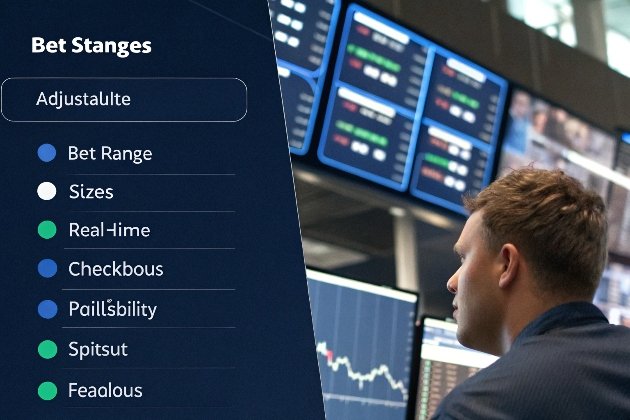When I first started managing my venue, I struggled to find the right balance between keeping players happy and ensuring consistent profitability. There were days when players were happy, but my revenue took a hit.
Designing the profitability model for my game kit is about creating a balanced system. I need to align player excitement with long-term venue profitability by adjusting key elements like RTP 1, bet sizes, volatility 2, and player retention strategies.
To ensure long-term success, it’s critical to plan the profitability model with both the player experience and operational goals in mind. Let’s dive into how you can achieve this.
What Key Elements Should I Consider When Designing the Profitability Model?
As a venue owner, I constantly juggle between keeping the games exciting and ensuring they remain profitable. One of the first things I did was consider how every element of the game design impacts revenue.
When designing the profitability model, you should focus on setting an optimal RTP 3, controlling volatility, offering flexible bet sizes, and incorporating player retention 4 incentives. These factors are crucial in making sure the model balances player satisfaction and venue success.

Key Elements for Designing Profitability
- RTP (Return to Player): Setting an optimal RTP of around 85–95% can create a balance where players feel satisfied with their chances of winning while ensuring the venue remains profitable.
- Volatility Levels: I can control volatility by adjusting the frequency of wins. For low volatility, I offer frequent small wins, while for high volatility, I provide rare big wins that encourage risk-taking.
- Flexible Bet Sizes: By offering different coin denominations and betting limits, I ensure that both low-spending and high-spending players feel welcome, which helps to maximize revenue across customer segments.
- Progressive Jackpots: I use local or networked progressive jackpots, which build excitement among players as a portion of each bet contributes to the jackpot, keeping them coming back for more.
- Bonus Customization: Customizing bonus rounds or free spins helps to strategically reward players without affecting long-term profitability. For example, triggering a bonus round at a certain win threshold can keep engagement high.
| Element | Purpose | Example |
|---|---|---|
| RTP | Balances player satisfaction & house edge | 85% - 95% payout rate |
| Volatility | Attracts different types of players | Low volatility = frequent wins, high volatility = larger wins |
| Bet Sizes | Accommodates different budgets | Range of coin denominations from $0.25 to $5 |
| Progressive Jackpot | Increases player retention | Jackpot grows with each bet |
| Bonus Features | Keeps players engaged | Free spins, multiplier rounds |
By considering these elements, I can adjust the model to meet both player preferences and my venue's financial goals.
How Can I Adjust the Profit Model After Installation?
When I first set up my game kits, I wasn’t sure if the initial settings would hold up over time. As player behavior changed and my venue's objectives evolved, I found that the ability to tweak the profit model was essential.
After installation, you can adjust the profit model by modifying key game parameters such as RTP 5, volatility, and bonus features. This helps optimize the profitability as you gather more data about player preferences and behaviors.

How to Adjust the Profit Model Post-Installation
- Monitor Player Behavior: By tracking how players interact with the game, I can adjust parameters like RTP or win frequency to better align with their expectations. If players feel too many wins are occurring too frequently, I can tweak the settings to increase the difficulty.
- Adjust Payout Structures: As player behavior shifts, I can alter the win/loss cycle to maintain the excitement level while maximizing profits. For example, increasing the jackpot size or changing bonus feature frequencies.
- Test and Evaluate: Using A/B testing on different configurations, I can monitor how each change impacts player retention and overall revenue. This allows me to fine-tune the model as necessary.
| Adjustment Type | Impact | Example |
|---|---|---|
| RTP | Adjusts the payout percentage | Increase RTP for better player experience |
| Volatility | Controls win frequency and size | Increase win size in high-volatility games |
| Bonus Features | Adds excitement without impacting profitability | Trigger bonuses after certain thresholds |
Using these methods, I can ensure the game kit’s profit model is always optimized for the changing demands of the venue.
Can I Customize the Odds for Specific Games to Balance Profits?
One of the best features I’ve found is the ability to adjust the odds for different games. This allows me to target specific player segments while optimizing the revenue generated by each game.
Yes, I can customize the odds for specific games by adjusting payout percentages, win frequencies, and jackpot sizes. This enables me to balance player excitement with the overall profitability of my venue.

Customizing Odds for Specific Games
By fine-tuning odds, I can cater to different types of players. For example, a fish game might have higher odds for casual players who enjoy frequent small wins. In contrast, a slot game might have lower odds for risk-seeking players, offering rare but significant jackpots.
| Game Type | Target Audience | Customization Options |
|---|---|---|
| Fish Games | Casual players | Increase win frequency, smaller payouts |
| Slot Machines | High-risk players | Lower win frequency, larger jackpots |
| Hybrid Games | Mixed player types | Moderate win frequency, moderate jackpots |
I adjust the odds based on real-time data and player preferences. By tracking behavior across different games, I can ensure that my venue is generating consistent profits without alienating any particular type of player.
How Do You Ensure My Venue Is Consistently Profitable?
Running a profitable venue requires continuous monitoring and quick adjustments based on data. After implementing the game kits, I focus on analyzing performance metrics to ensure I’m maximizing profitability while maintaining player satisfaction.
By using data-driven adjustments, I monitor key metrics like revenue per player, session length, and payout ratios. This helps me ensure that my venue remains profitable, even as player behavior and market conditions change.

Ensuring Consistent Profitability
- Track Key Metrics: I use backend analytics to track key performance indicators like revenue per player, average playtime, and session frequency. This helps me quickly identify profitable games and areas for improvement.
- Real-Time Data: By monitoring data in real-time, I can make adjustments on the fly to optimize profitability. If a certain game isn't performing well, I can tweak the RTP, volatility, or add a bonus round to attract more players.
- Market Research: I continuously stay updated on industry trends and customer preferences, which allows me to adjust my offerings to stay competitive and profitable.
| Metric | Purpose | Frequency |
|---|---|---|
| Revenue per Player | Tracks how much each player spends | Daily |
| Session Length | Measures average playtime per session | Daily |
| Game Performance | Analyzes which games generate the most revenue | Weekly |
| Payout Ratios | Tracks the payout frequency and amounts | Weekly |
This approach helps me maintain consistent profitability while ensuring that the player experience remains high and that my venue remains competitive.
Conclusion
Designing a profitable game kit model involves balancing RTP, volatility, and player incentives. By continuously adjusting these factors and using real-time data, I ensure my venue remains profitable and engaging for players.
Footnotes
1. Guide to understanding RTP and its impact on casino profits. ↩︎
2. Explanation of volatility and how it affects player behavior. ↩︎
3. Importance of setting optimal RTP for player satisfaction. ↩︎
4. Insights on how to retain players through game features. ↩︎
5. How adjusting RTP can optimize long-term profits. ↩︎
6. The role of jackpot size in game volatility and excitement. ↩︎
7. Benefits of flexible bet sizes to maximize revenue. ↩︎
8. How progressive jackpots can enhance player engagement. ↩︎
9. A guide to adjusting payout structures for profit maximization. ↩︎
10. How A/B testing helps refine game settings for better revenue. ↩︎



